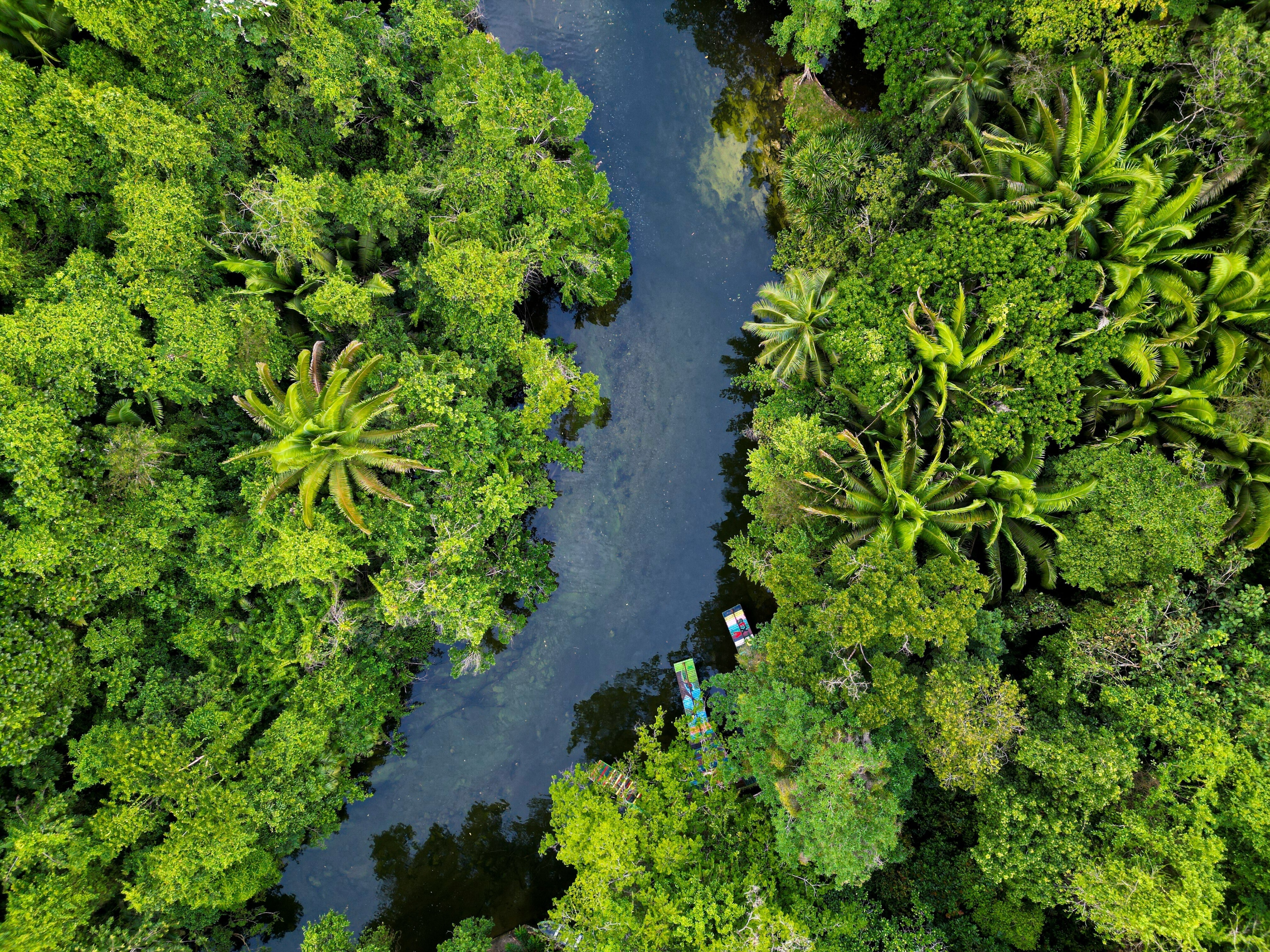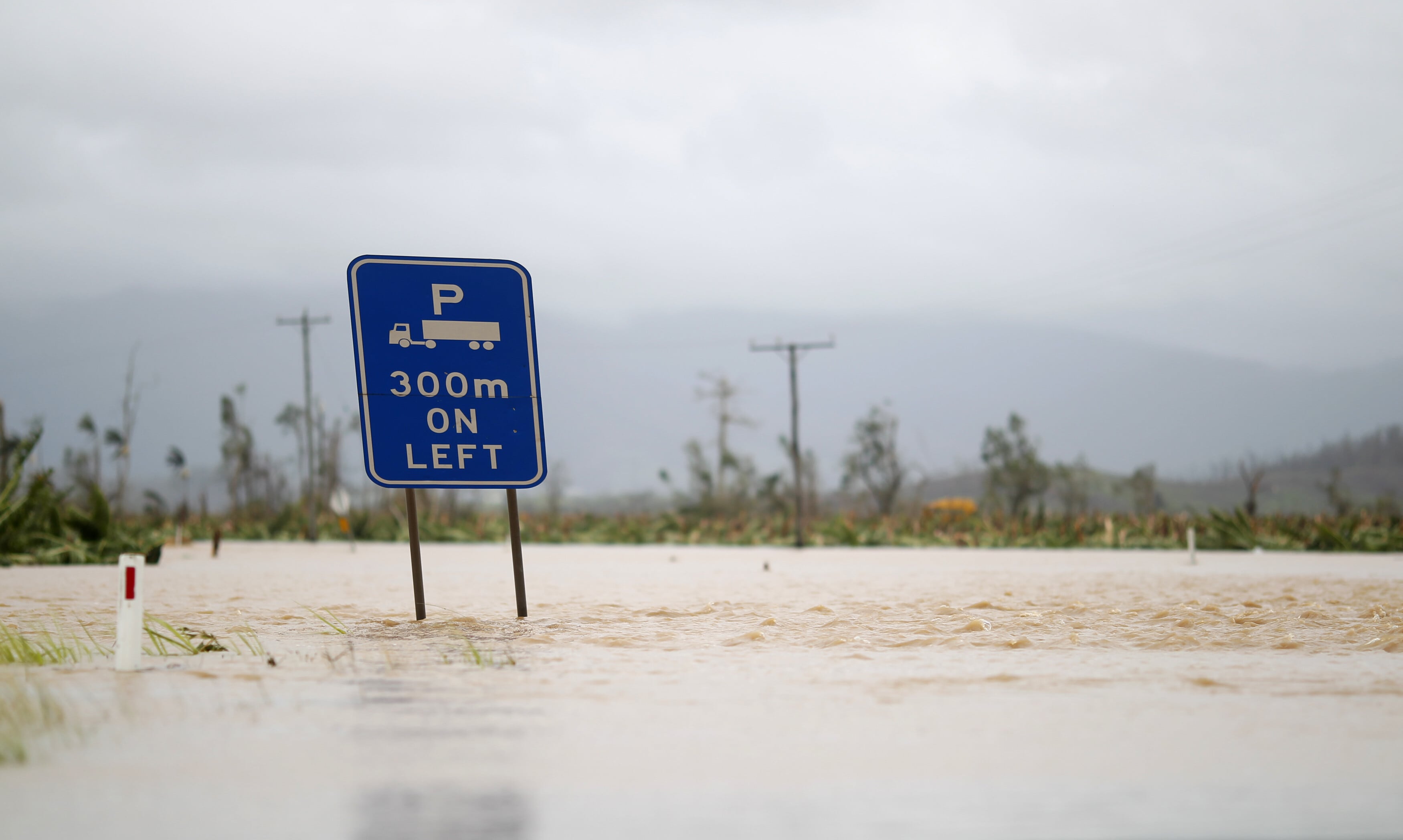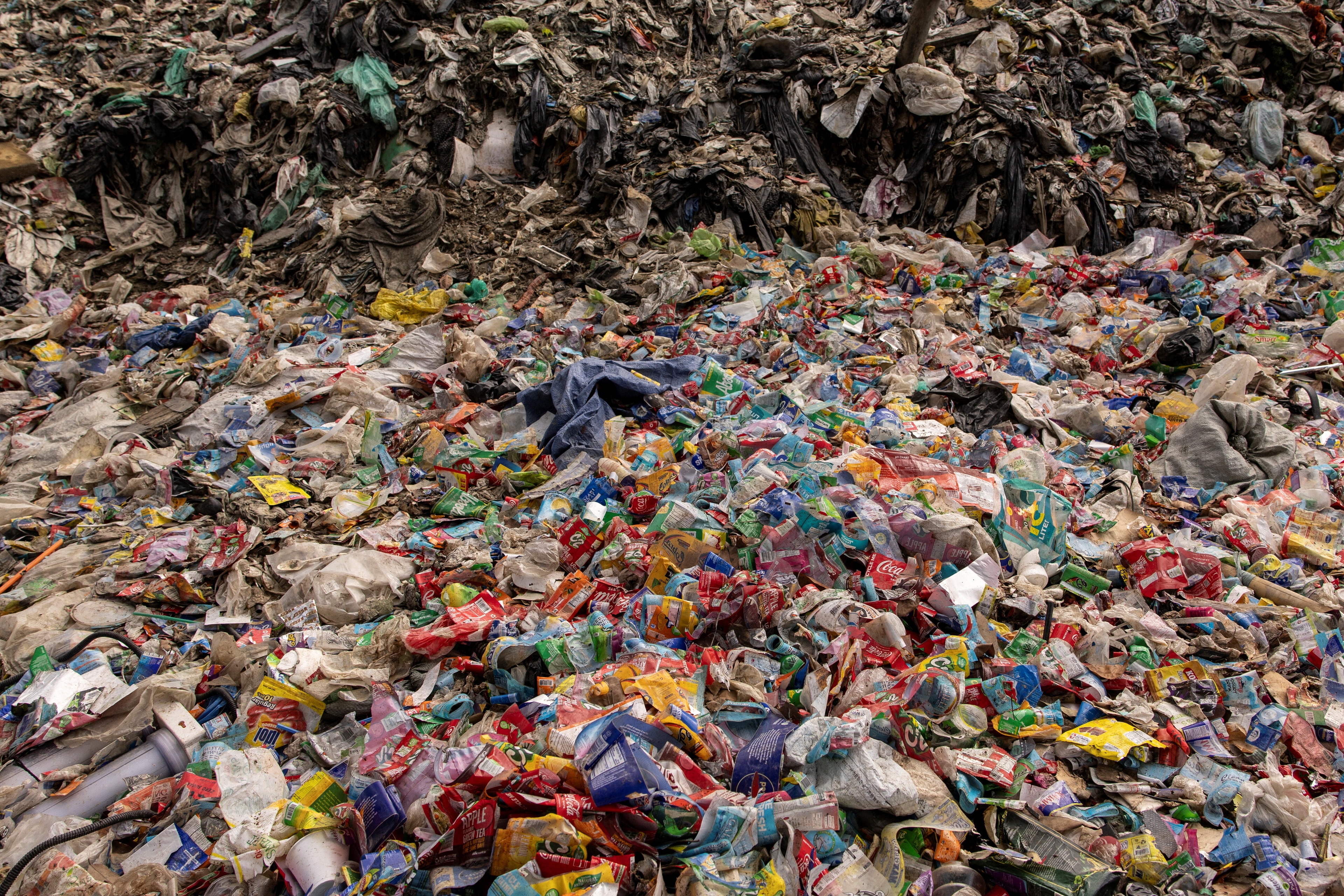Why is blue carbon a valuable tool in the fight against climate change?

Blue carbon ecosystems are under threat from human activities, such as coastal development, pollution, and overfishing.
Image: Unsplash/Benjamin L. Jones
Katie Wood
Communications Officer, Ocean Program, World Resource InstituteOliver Ashford
Program Associate, Ocean Program, World Resource InstituteStay up to date:
Restoring ocean life
- Blue carbon is the carbon stored in coastal ecosystems, such as mangroves, seagrasses, and salt marshes.
- These ecosystems are highly efficient at storing carbon, and they can store more carbon per unit area than forests.
- They also protect coastal communities from storms and erosion, help to regulate water quality, and provide habitat for a diverse range of marine life.
- However, blue carbon ecosystems are under threat from human activities such as coastal development, pollution, and overfishing.
Coastal ecosystems, such as mangroves, seagrass meadows and salt marshes, provide critical services to people who live near them, from sustaining local diets and fishing industries to protecting homes and infrastructure from erosion and storm damage.
But their benefits aren’t limited to coastal communities. Healthy coastal ecosystems can be a powerful ally in addressing climate, biodiversity and development crises on a global scale.
These “blue carbon ecosystems” offer a natural solution to remove carbon from the atmosphere, build resilience to mounting climate change impacts and preserve vital biodiverse habitats. Interest and investment in blue carbon as a natural solution is growing worldwide. At the same time, however, these ecosystems are being destroyed at a rapid pace; if nothing is done to change course, they could disappear globally within a century.
But what exactly is blue carbon? And how can countries and communities better protect these ecosystems and leverage their vast potential?
What is the World Economic Forum doing on blue carbon?
What is blue carbon?
“Blue carbon” refers to carbon that is captured from the atmosphere and stored in marine and coastal ecosystems like seagrass meadows, mangroves and tidal marshes. These ecosystems are carbon removal powerhouses, storing up to 5 times more carbon per area than tropical forests and absorbing it from the atmosphere about 3 times as quickly, too. Despite covering only around 0.5% of the seafloor, blue carbon ecosystems may account for more than 50% of all carbon buried in marine sediments.

One reason these ecosystems are so efficient at removing and storing carbon is that the plant species they contain tend to grow rapidly, absorbing CO2 from the atmosphere at a fast pace in the process. And they typically grow in oxygen-deprived or “anaerobic” soils. This helps slow the decomposition of plant matter (which releases CO2 back into the atmosphere) so that carbon can be sequestered for long periods — often hundreds or thousands of years.
In addition, blue carbon ecosystems all contain plants that have specially adapted to living at the land-sea interface. They’re able to survive salinity and temperature changes, and their extensive root systems enable them to withstand tidal flows and storm surges.

Thanks to their unique traits, these diverse and complex ecosystems can provide extensive benefits to people and nature while taking up proportionally small spaces on the seafloor. Sustainably managing them presents an immediate and viable way to address climate change, when combined with other climate mitigation measures.
How do blue carbon ecosystems help people and the planet?
It’s not all about carbon. Just by existing, these ecosystems provide a wide variety of “co-benefits” to people and nature, ranging from food, water and economic security to protection from climate change impacts.
Preserving biodiversity
Blue carbon ecosystems are valuable hubs for biodiversity. They provide habitat for a wide variety of marine and coastal species, from birds, fish and mammals to invertebrates, algae and microbes. Many of these species are critical not only to maintaining ecosystem health, but also to supporting local diets and fishing industries.
Mangroves, seagrasses and salt marshes also serve as a buffer, protecting other coastal waters against pollutants from land — such as nutrient-rich agricultural and wastewater runoff — which can cause excessive algal growth and create low-oxygen marine “dead zones.” The dense vegetation in blue carbon ecosystems acts as a filter, slowing the flow of coastal water and allowing the plants and other organisms living in these habitats to trap and absorb excess nutrients.
Protecting coastlines from storms, floods and erosion
Rising global temperatures are driving more destructive coastal storms — such as the twin Category 4 cyclones that hit Vanuatu in early March 2023, causing damage, flooding and power outages that impacted around 80% of the country’s population. Vulnerable communities and countries can leverage blue carbon ecosystems as a nature-based solution for adapting to these increasing climate impacts.
In tropical areas globally, mangrove forests play a key role in protecting coastlines from wave action and storm surges. By absorbing some of the storm’s energy, they can help reduce damage from extreme weather events like cyclones. Some countries, such as the Philippines, are already investing millions in mangrove restoration to help protect communities and infrastructure against future storms.

Blue carbon ecosystems can also help reduce coastal erosion, which causes land and habitat loss as well as damage to homes and infrastructure. Seagrass roots grow deep and excel at aggregating and building up sediments, while mangroves’ extensive above-ground root networks act similarly; both methods help stabilize loose soils and solidify coastlines.
Improving food and water security
Blue carbon ecosystems can improve both water quality and food security at the local level. By protecting against weather related impacts such as flooding and storm surges, they keep salt water from infiltrating freshwater resources — such as groundwater — on which local communities may depend. Healthy blue carbon ecosystems such as mangroves and seagrass beds are also nursery grounds for a diverse array of marine and coastal life. These grounds are critical for certain fish and invertebrate species to reach maturity, after which they may be valuable to artisanal fisheries that contribute to local economies and strengthen food security in coastal areas. For example, a recent study estimated that fish catch is up to 70% higher in mangrove-adjacent areas than in areas without them.
Sustaining coastal economies
Alongside local fishing, blue carbon ecosystems provide recreational and leisure opportunities which can draw tourists, creating new jobs in the ecotourism industry as well as boosting related industries like food and hospitality. For example, in the Florida Keys National Marine Sanctuary alone, where mangroves and seagrass are two predominant ecosystems, a study found that tourism associated with the Sanctuary contributes $4.4 billion to Florida’s economy annually.

Why Are Blue Carbon Ecosystems at Risk?
Despite their inherent value and importance, blue carbon ecosystems are disappearing at a rapid pace. It is estimated that globally, 50% of salt marshes, 35% of mangroves and 29% of seagrass meadows have been degraded or lost since the mid-twentieth century. These ecosystems are succumbing to the “coastal squeeze” between climate-driven impacts (including sea level rise and extreme weather events) and development of coastal areas.
Climate change has increased the intensity of hurricanes and storms which batter coastlines and their natural structures, and sea level-rise is reducing the area available for these ecosystems to grow into. Large swathes of these ecosystems have also been removed or damaged by urban development and commercial use, such as aquaculture and agriculture. These practices not only destroy blue carbon ecosystems, but in some cases can trigger the release of stored carbon. For example, where mangroves are converted to shrimp ponds, one study found that about 60% of original mangrove carbon stocks are released into the atmosphere.
The writing is on the wall: If we continue on this path, the world will lose one of its most effective allies in combatting the climate and biodiversity crises. And coastal communities, especially in small island and developing nations, will lose a critical resource on which they depend for livelihoods, food and water security and resilience to climate impacts.
How to Protect Blue Carbon Ecosystems and Harness Their Power
All is not lost, however. There is growing momentum behind the development of projects to restore, protect or sustainably manage blue carbon ecosystems. Thanks to their significant carbon storage potential, there’s also an opportunity to leverage blue carbon credits — which monetize the value of stored carbon in mangroves, seagrasses and salt marshes — as a source of income for communities alongside the climate and biodiversity benefits of these ecosystems.
Kenya’s Mikoko Pamoja project, for example, is the first-ever mangrove conservation project linked to the global carbon market. This community-led restoration initiative raises money selling carbon credits, which in turn fund planting and conservation of the mangrove forest while providing a source of income to the community. With this money, the village has been able to expand freshwater access through installing plumbing or freshwater points and has improved education opportunities by renovating classrooms and buying textbooks.

However, while Mikoko Pamoja has been successful, benefitting both people and nature, not all blue carbon projects are equal. If projects are conducted without integrating local communities, establishing accurate carbon baselines or considering local ecological and social factors — such as customs, resource use or power dynamics — they may not bring their intended climate and ecosystem benefits. And they could negatively impact local populations who have traditionally managed and depended on these ecosystems.
National, regional and local governments, as well as project developers, must take steps to ensure that projects deliver their promised environmental impact and benefit all parties involved equitably. This can be achieved by:
- Adopting international best practices: Project developers and governments should follow best practice guidelines for blue carbon projects produced by groups such as the UNFCCC Climate Champions; these can help promote long-lasting and meaningful results for people, nature and the climate. Advice on innovative funding opportunities has also been developed to support the scale-up of these projects.
- Safeguarding local and indigenous rights: Blue carbon projects must be inclusive of all stakeholders, including government, civil society and local community and Indigenous groups. For example, blue carbon credits are sparking international interest, but these funding mechanisms must be inclusive and equitable in their approach to be successful. Previous projects involving carbon markets in the global forestry sector have shown that, when improperly implemented, these initiatives can spark land disputes with local and Indigenous communities pushed from ancestral lands. Governments and project developers must develop policies that uphold the rights of Indigenous peoples and traditional communities, as well as ensure social participation and preservation of natural ecosystems. This will be essential to ensure the long-term sustainability of blue carbon initiatives.
- Expanding blue carbon finance pathways: Investors and other stakeholders should consider a diverse range of project options; monetizing the value of blue carbon via carbon credits is not the only route. Conservation and restoration projects can also benefit from non-market financing approaches, where public or philanthropic funds are channelled to the protection of ecosystems to generate biodiversity or livelihood benefits.
While there is no single solution to addressing climate change, blue carbon projects can be a valuable ally in tackling the climate and biodiversity crises whilst supporting sustainable development — but only if we invest in them and the communities that make them successful.
To help support project stakeholders, new research commissioned by the High Level Panel for a Sustainable Ocean Economy (Ocean Panel) provides guidance for developing impactful and equitable blue carbon projects. To learn more, see: The blue carbon handbook: Blue carbon as a nature-based solution for climate action and sustainable development.
Don't miss any update on this topic
Create a free account and access your personalized content collection with our latest publications and analyses.
License and Republishing
World Economic Forum articles may be republished in accordance with the Creative Commons Attribution-NonCommercial-NoDerivatives 4.0 International Public License, and in accordance with our Terms of Use.
The views expressed in this article are those of the author alone and not the World Economic Forum.
Related topics:
Forum Stories newsletter
Bringing you weekly curated insights and analysis on the global issues that matter.
More on Nature and BiodiversitySee all
Wei Peng and Sabine Miltner
September 18, 2025
Tom Crowfoot
September 18, 2025
Caroline Meech and Sakshee Singh
September 17, 2025
Tania Strauss and Beverley Postma
September 17, 2025
Metolo Foyet
September 16, 2025




